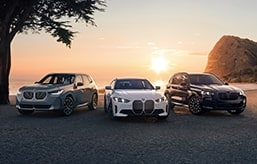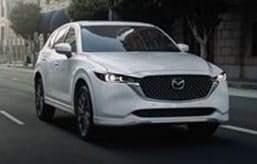- The Mercedes-Benz C111 originally debuted at the 1969 Geneva Motor Show.
- I got to drive a version built in 1970, powered by a four-rotor Wankel engine making nearly 350 horsepower.
- Just over a dozen C111 prototypes were built in the 1960s and '70s.
Driving the 1970 Mercedes-Benz C111, a 54-Year-Old Concept That Still Looks Like the Future
Mercedes' quad-rotor, gullwing wedge was a dream car, then and now
With its gullwing doors, mid-engine layout and now-iconic wedge shape, the Mercedes-Benz C111 concept would've been a radical vision of the future when it debuted in 1969. Five decades later, the C111 remains whimsically out-of-this-world and is totally unlike any Mercedes-Benz I've ever driven.
A lot of that comes down to the engine. Mercedes-Benz used several C111 prototypes to test different powertrain configurations throughout the 1960s and '70s, but this one has the insane 4.8-liter four-rotor Wankel setup, introduced in 1970. This was the second C111 ever built, behind the original three-rotor Wankel car that premiered at the Geneva Motor Show in 1969.
Why the insanity? The four-rotor engine produced around 350 horsepower — remember, this was 1970 — and could reportedly reach a top speed of 186 mph. This made it the second-most powerful of all the C111s, behind the final 493-hp twin-turbo V8 version that arrived almost a decade later.
My first memory of this C111 is seeing it parked next to a Reliable transport trailer while a team of Mercedes-Benz handlers added oil to the engine. But I digress, that's more a quirk — a feature, not a bug — of the rotary engine. The C111 itself is a marvel, done up in orange with bodywork that looks like it could've come out of the '50s, '60s, '70s, '80s or even '90s. Even in 2024, it's a fresh look. Credit the staying power of the wedge shape. Perhaps that's why wedges got their own special class at this year's Pebble Beach Concours d'Elegance.
The gullwing doors are short and super light, and getting in the C111 is best achieved by going butt-first over the wide sill and sort of plunking yourself into the (plaid!) driver's seat. You'll recognize the steering wheel from other 1970s Mercedes-Benz products, but everything else is unique, and has this almost comical, Batmobile-esque appearance. The tall metal shifter, the quad gauges atop the center stack, the vertically oriented air conditioning — it's all a bit weird (in a good way). Closing the door requires you to duck your head and give the lever a good slam. Headroom? Not in high supply. I'm 5 feet, 8 inches tall, and the top of my noggin is brushing up against the roof the whole time.
Before setting off, there's more weirdness to take in. The tachometer goes to 9,000 rpm (in a Mercedes!). The manual shifter uses a dogleg pattern, with a lift-up lockout for reverse and first gear, the latter of which is probably intentionally designed so you don't accidentally try to slam the C111 into first when you mean to select second and blow the engine to smithereens. Then there's the unmistakable whirr of the rotary engine, which is loud as heck, because it's right behind you. This C111 is a sensory overload (that's a compliment).
I'd love to tell you a story about how I tested the C111's claimed 186-mph top speed or got to know it super well on a racetrack, but the truth is, I drove it for an extremely short time on a closed runway at the Salinas airport about an hour's drive east of Monterey, California. It goes, I can tell you that much, with power really coming on around 3,500 rpm, accompanied by the unmistakable high-pitched whine of four rotors spinning away behind you.
The transmission is a treat; the clutch is heavy yet easy to modulate, and the gearbox's throws are only as long as to feel appropriate for such a tall metal shifter. There's a lightness and tossability to the steering and chassis that you don't really expect, too.
54-year-old concept car or not, you get the sense that the C111 car wasn't just created to be a one-off. It was designed to be driven, and driven hard. It's raw and visceral, unique and compelling. It's decidedly un-Mercedes-like in the best possible way.







 by
by  edited by
edited by